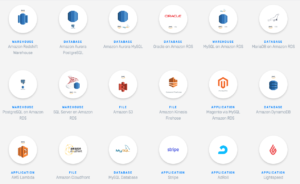
Fivetran Launches Pay-As-You-Go Option for ETL

Fivetran wants to make it “stupidly simple” for customers to load data into cloud data warehouses, and judging from the company’s rapid growth, it seems to be working. Last week, the extract, transformation, and load (ETL) service company doubled-down on the simplicity mantra with a new plan that lets data customers pay by the sip.
Fivetran customers don’t have to use the new pay-as-you-go payment plan to get access to the ETL data integration service. They can still enter into year-long subscription agreement, if they like. But the company is betting that it will be able to attract a lot more customers with favorable terms that allow them to move up to 1,000 rows of data for just $1.
“I do think this is going to be a lever for us to help us to further accelerate that” growth, Fivetran director of product management Alexa Maturana-Lowe tells Datanami. “We can get people on the Fivetran bus with online purchasing in a way that’s a lot easier and a lot more flexible and doesn’t require that [annual] commitment. So it’s a piece of acceleration to our overall growth.”
Fivetran has been doing a lot of growing recently. The Oakland, California company, which was founded by George Fraser and Taylor Brown in 2013 with the idea of simplifying data integration, has doubled its customer base every year for the past few years. In April, the company announced that it had passed the 1,000-customer milestone, and in June, it completed a $100-million Series C round of venture financing led by Andreessen Horowitz and General Catalyst, at a $1 billion valuation.
Clearly, the market has an appetite for a better ETL experience. That’s not surprising, considering that ETL (or ELT, as Fivetran prefers), has been among the most painful parts of big data analytics, and a bottleneck preventing companies from getting more value from their data.
Fivetran provides what amounts to a data-engineer-in-a-box. The company supports about 150 pre-built data connectors that can pull data out of SaaS applications like Salesforce and databases like PostgreSQL, which can run in the cloud or on prem. It complements those connectors with support for about 14 cloud-based data warehouses, including Snowflake, AWS RedShift, and Google Cloud BigQuery, among others. All of its data destinations are in the cloud; there is no on-prem option for loading destination data warehouses.
The secret sauce of Fivetran is the consumerization of B2B software, Maturana-Lowe says. “Instead of a super-configurable, admin-required tool, like Informatica or some of those tools where you really need somehow who understands how to click all the buttons and set it up, with Fivetran, Joe Schmo off the street – me, even! –can go in and create a connector for any kind of solution we offer.
“The value there is hey, an analyst in the organization can actually do the ELT that they need to get the data they need to answer those questions, on their own, without going through a centralized IT organization and having someone who will be the bottleneck to configure the change, or working with directly with a data engineer and getting prioritized in the sprint process,” she continues.
After the initial data load is complete, Fivetran maintains an up-to-date copy of the customer’s data in the cloud data warehouse. The company uses change data capture (CDC) technology to keep on top of changes in source databases or applications, and keeps an eye out for changing data schemas too. When a new field is added or the data model is changed (a fairly common occurrence in NoSQL databases such as MongoDB), Fivetran has built-in intelligence to handle that. JSON files are flattened into relational tables.
If you want to go in and fiddle with the controls, Fivetran isn’t for you. “You’re not going to go into the tool and make changes,” Maturana-Lowe says. “You’re getting that standard solution through Fivetran. That’s what makes it possible to do a five- minute setup, or zero configuration. We build these tools that automate the complexity of capturing all this custom stuff. Then we’ve made design decisions to standardize what is delivered.”
In some ways, Fivetran is the Spirit Airlines of data integration. You can start out with the bare bones, budget-friendly data integration service, and move up in capabilities and cost from there. The service is designed to satisfy a large swath of the populace at a great price, but you’re never going to confuse it with flying private.
The company’s “Starter” package, which costs $1 per credit (good for 1,000 row updates), provides the core service, but limits data synchronizations to a one-hour frequency. The “Standard” package adds SSH encryption for data-in-flight, API access, and a 15-minute sync frequency (among other features), and costs $1.50 per credit. The “Enterprise” package adds logging, a stricter service level agreement, and support for multiple entities (among other features), and costs $2 per credit.
In an era in which data pipelines have become so critical for sustaining companies’ digital transformation projects amid a shortage of data engineers, the question may not be why Fivetran is succeeding, but why there aren’t more vendors doing the same thing.
Related Items:
VC Ben Horowitz Dishes on Hadoop, AI, and Data Culture




























